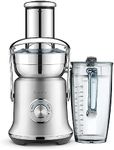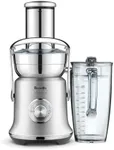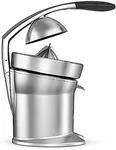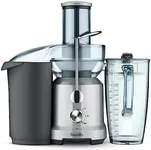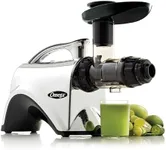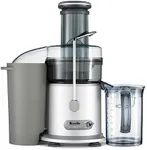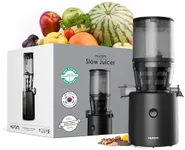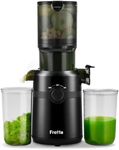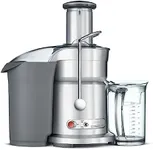Buying Guide for the Best Juicer Machines
Choosing the right juicer machine can make a big difference in how often you use it and how satisfied you are with the results. Before you buy, think about what kinds of fruits and vegetables you want to juice, how much time you want to spend on preparation and cleaning, and how important juice quality is to you. Understanding the main features and specifications will help you find a juicer that fits your lifestyle and needs.Type of JuicerThe type of juicer refers to the mechanism it uses to extract juice. The main types are centrifugal, masticating (also called slow or cold press), and citrus juicers. Centrifugal juicers are fast and good for hard fruits and vegetables, but they can be noisy and may not extract as much juice from leafy greens. Masticating juicers work more slowly but are quieter and better at juicing greens and soft fruits, often producing more juice and less foam. Citrus juicers are specialized for oranges, lemons, and similar fruits. To pick the right type, consider what you plan to juice most often and whether speed or juice quality is more important to you.
Juice YieldJuice yield is the amount of juice you get from a given amount of produce. Higher yield means less waste and more value from your fruits and vegetables. Masticating juicers usually have a higher yield, especially with leafy greens, while centrifugal juicers may leave wetter pulp. If you want to maximize juice output, especially from greens or soft produce, look for a machine known for high yield. If you mostly juice hard fruits and don’t mind a bit of waste, yield may be less critical.
Ease of CleaningEase of cleaning refers to how simple it is to take apart, wash, and reassemble the juicer. Some machines have many parts and small crevices that can be hard to clean, while others are designed for quick rinsing or are dishwasher safe. If you plan to juice daily or want a hassle-free experience, choose a juicer with fewer parts and easy cleaning features. If you don’t mind spending extra time cleaning, you might prioritize other features instead.
Feed Chute SizeThe feed chute is the opening where you insert fruits and vegetables. A larger feed chute allows you to put in bigger pieces or even whole fruits, reducing prep time. Smaller chutes require more chopping and preparation. If you value convenience and want to save time, look for a juicer with a wide feed chute. If you don’t mind prepping your produce, chute size may be less important.
Noise LevelNoise level is how loud the juicer is during operation. Centrifugal juicers tend to be louder due to their high-speed motors, while masticating juicers are generally quieter. If you plan to juice early in the morning or in a shared space, a quieter machine may be preferable. If noise isn’t a concern, you can focus on other features.
Speed SettingsSpeed settings allow you to adjust how fast the juicer operates. Some juicers have multiple speeds for different types of produce—slower speeds for soft fruits and greens, faster speeds for hard vegetables. More speed options give you flexibility, but if you mostly juice one type of produce, a single-speed machine may be sufficient. Choose based on the variety of items you plan to juice.
Pulp ControlPulp control refers to the ability to adjust how much pulp ends up in your juice. Some juicers let you choose between more or less pulp, while others have a fixed setting. If you have a strong preference for pulp-free or pulpy juice, look for a machine with adjustable pulp control. If you’re not particular, this feature may not be necessary.
Size and StorageThe size of the juicer affects how much counter or storage space it takes up. Larger machines may be more powerful or have bigger containers, but they can be bulky. Compact models are easier to store but may have smaller capacities. Consider your kitchen space and how often you’ll need to move or store the juicer when making your choice.
